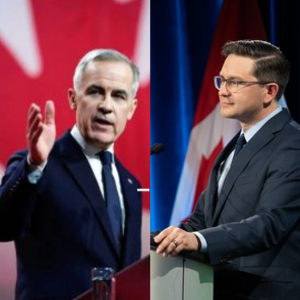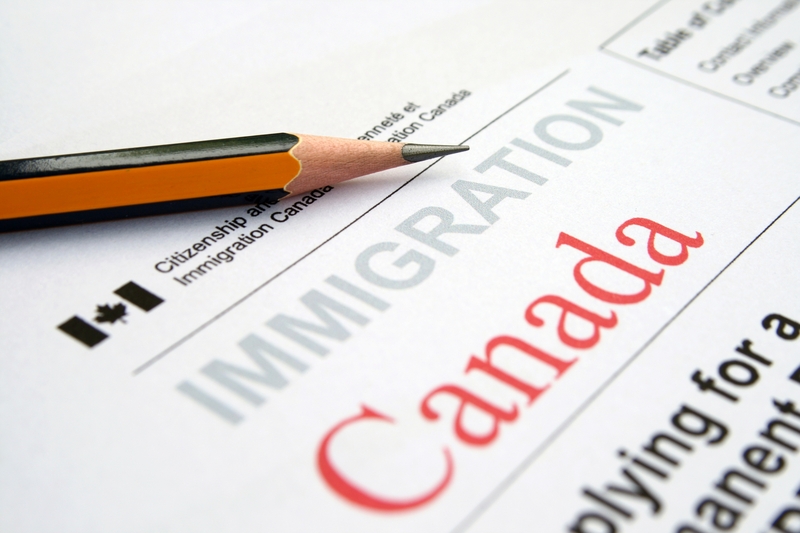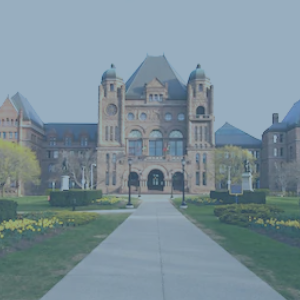
The Progressive Conservatives have the strongest brand loyalty, with the largest group of dedicated voters among Ontario’s three major parties. The Liberals have weaker brand loyalty than the PCs, but have access to a larger group of less loyal voters. The NDP have the weakest brand loyalty of the three major parties, but their brand personality is the most distinct. These findings come from INNOVATIVE’s latest online survey of 1409 Ontario residents, weighted to n=1000, conducted from April 27th to May 2, 2022.
Brand loyalty and party image
About 1-in-8 say they always vote PC (13%) and about 1-in-10 say they always vote Liberal (11%). Conversely, 1-in-4 say they never vote Liberal (25%) and 3-in-8 say they never vote PC (37%). In other words, the Liberals have access to the largest pool of potential voters, the PCs have stronger brand loyalty, with a larger group of dedicated supporters. The NDP have the weakest brand loyalty of the three major parties, with just 6% saying they always vote NDP and over 2-in-5 saying they would never vote NDP (43%).
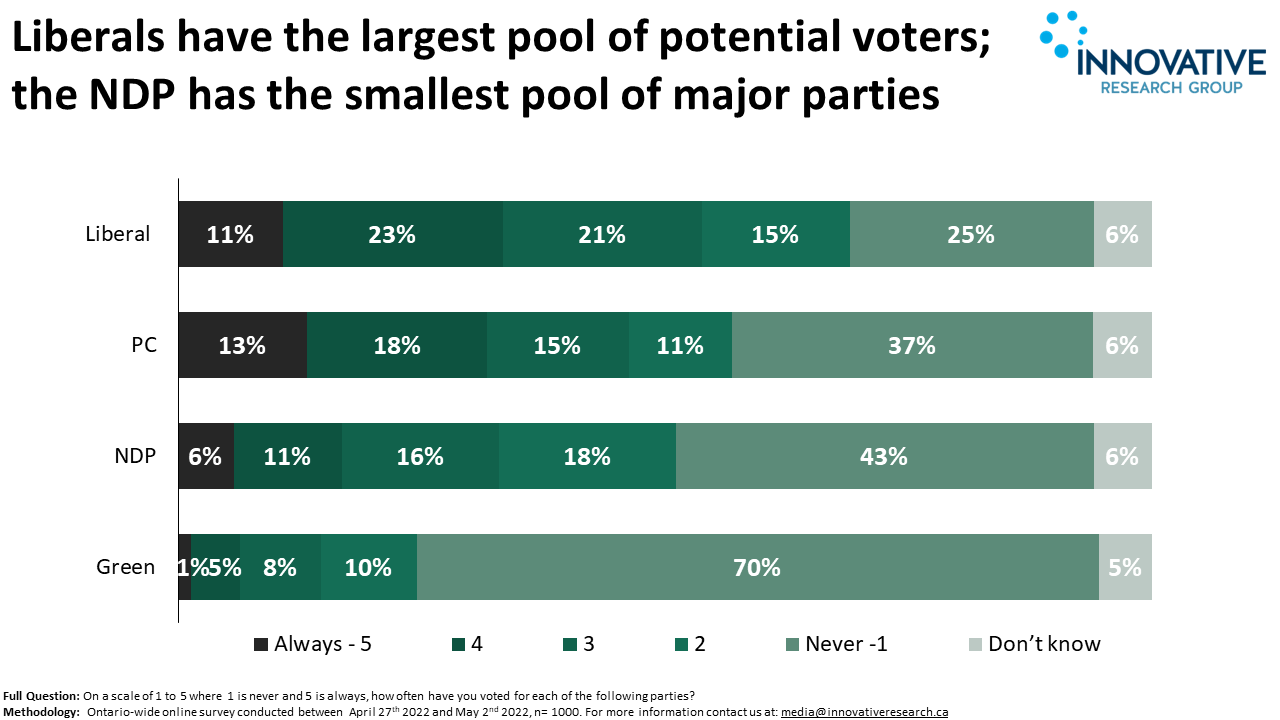
All three major parties are viewed with similar levels of positivity and negativity across Ontario. The PCs are viewed positively by 23% but also have the most negative impressions at 37%. The Liberals are viewed positively by 21% and negatively by 33%. The NDP are viewed positively by 23% and negatively by 31%.
Brand personality
Like Andrea Horwath, the NDP’s brand personality is distinct from the Liberals and PCs. Both NDP voters and voters for other parties tend to agree on their description of the NDP. For the Liberals and PCs, the parties are seen as a positive Dr. Jekyll among their own voters, but as a more negative Mr. Hyde among supporters of other parties.
NDP voters and non-NDP voters alike often describe the NDP as “hardworking”, “practical” and “friendly”. However, non-NDP voters are likeliest to describe the NDP as “careless”.
The PCs are likelier to be described as “hardworking” and “practical” by PC voters, and likelier to be described as “careless” and “cold” by non-PC voters.
The Liberals are likelier to be described as “reliable” and “practical” by Liberal voters, and likelier to be described as “careless” by non-Liberal voters.
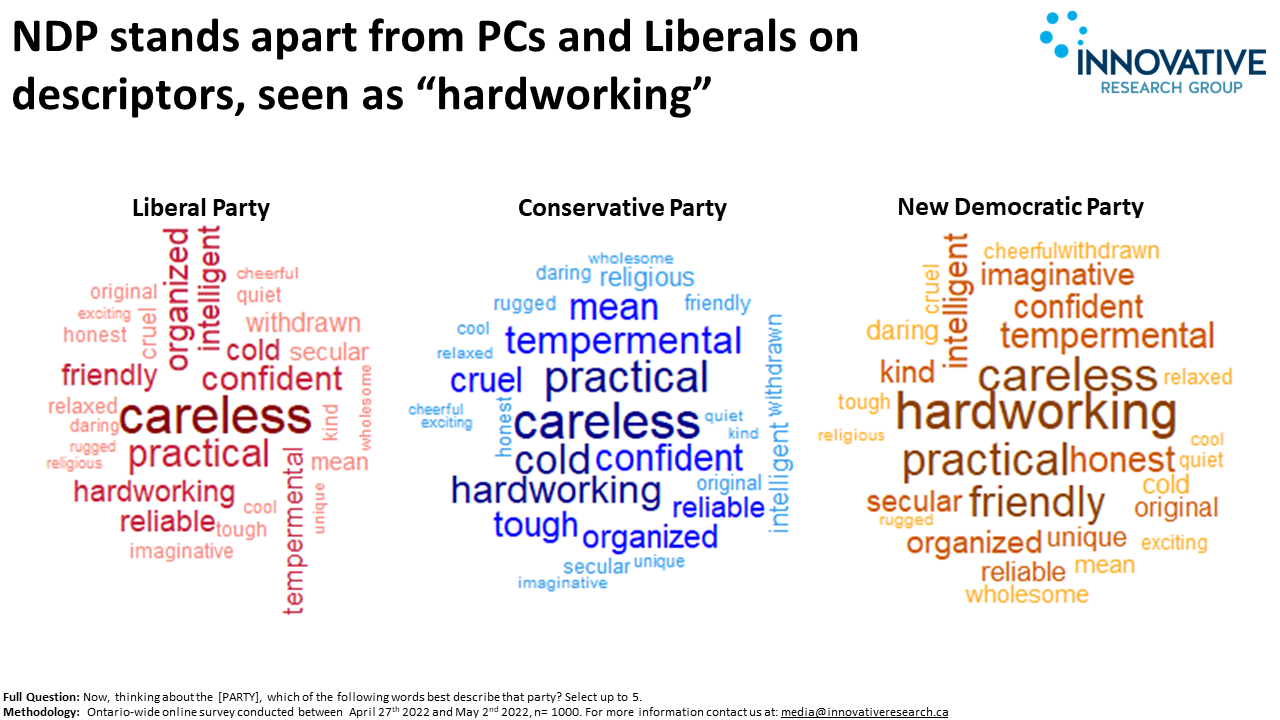
Brand promise
Parties don’t have products per se, but they do have platform that promise to make a difference for the benefit of voters. About 1-in-4 (27%) say they would be better off under an NDP government in Ontario. About 1-in-5 say they would be better off under a Liberal government (22%), and slightly less than 1-in-5 say they would be better off under a PC government (19%).
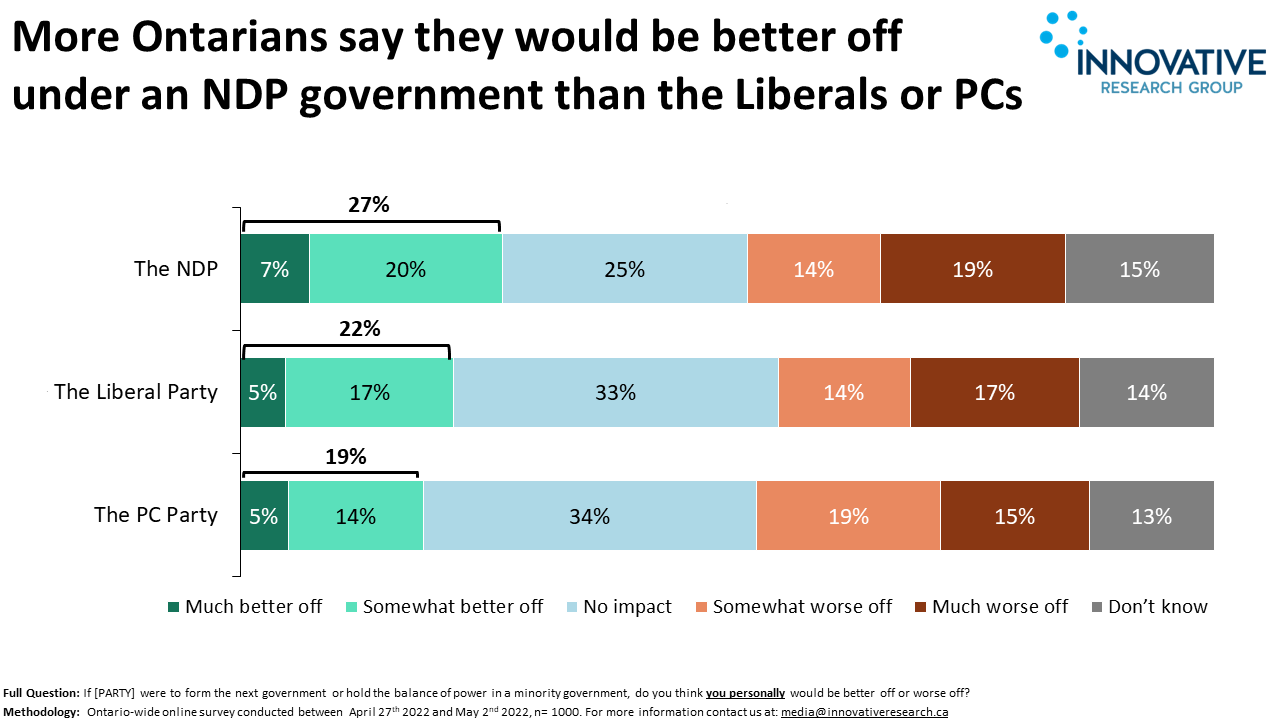
Those who said they would be better off under an NDP government cite increased funding for social services and programs (31%) and better focus on vulnerable groups (14%) as their top two reasons. Those who said they would be worse off under an NDP government overwhelmingly cite higher taxes/less fiscal responsibility/increased inflation as their top concern (48%).
Those who said they would be better off under a Liberal government mention funding for social services and programs (23%) and better focus on minority populations and low-income families (16%) as their top 2 reasons. Reckless spending/tax increases/deficits was the number one answer among those who said they would be worse off (39%).
Those who said they would be better off under a PC government point to fiscal responsibility and a stronger economy (41%), followed by general support for the party’s platforms and policies (21%). The top answer among those who said they would be worse off is funding cuts and privatization (22%).
Issues and party image
The cost of living is currently the top issue for Ontarians. Nearly 4-in-5 (78%) say it is a top-3 issue for them, and 44% say it as their number one issue. Health care is second, with 7-in-10 voters describing it as a top-3 issue (69%) and 25% rating it as their number one issue. The environment and debt and the deficit are also top 3 issues for 1-in-3 Ontarians (33% and 32%, respectively).
The PCs have broken away from the pack on the question of who can better manage the cost of living (28%), as well as the debt and deficit (36%), jobs (32%), and electricity (24%).
The NDP is the top choice to handle social issues (35%) and health care (28%).
The only issue the Liberals are the top choice to handle is education (24%), and the NDP are a close second (22%).
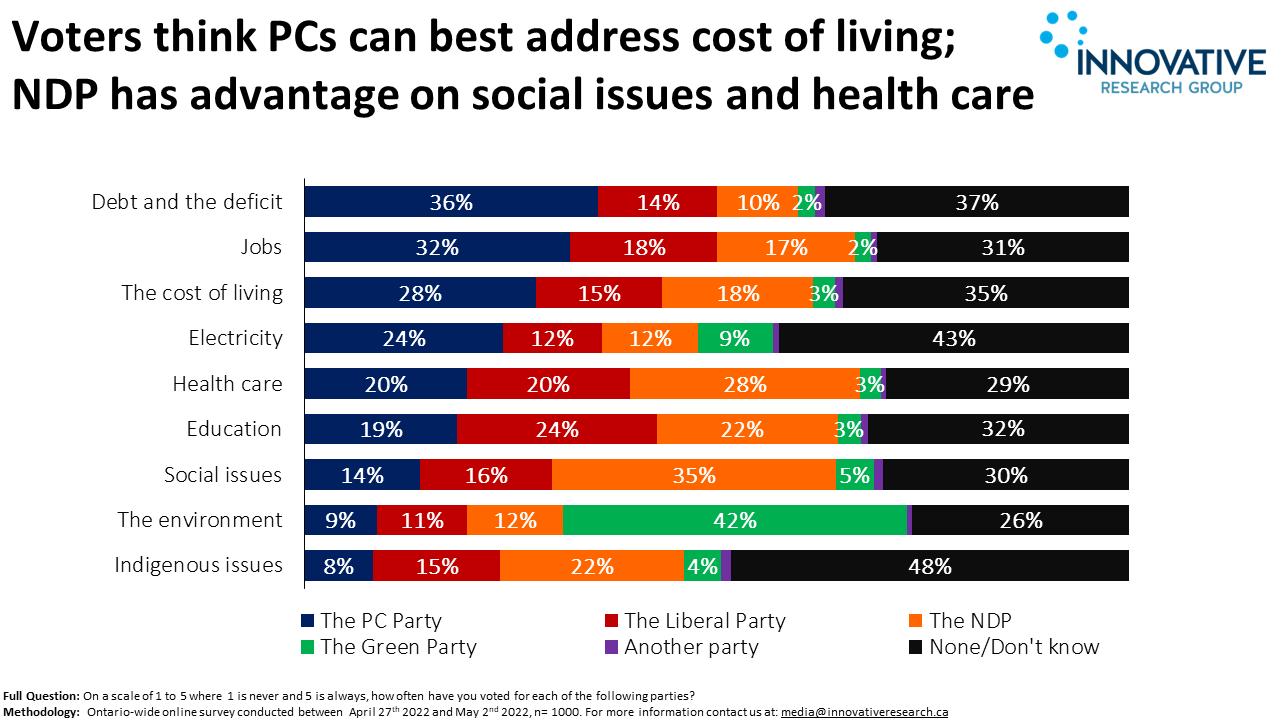
Summary
The PCs have the strongest brand loyalty, with the most dedicated base of voters. Their party image also suggests that they can best handle the cost of living, the number one issue on voters’ minds.
The NDP has the most distinct brand personality that appeals to the supporters of both the NDP and of other parties. They have stronger brand promise, with more Ontarians say they would be better off under an NDP government than a PC or Liberal government. The NDP also have an edge as the party that would do the best job on health care, a top-2 issue in this election. They have the weakest brand loyalty, however, with the smallest potential pool of voters of the three major parties. So they start low, but they have significant growth potential.
The Liberals have access to the largest pool of potential voters but are currently struggling to attract votes outside of their core supporters. In addition, their party image is indistinct relative to the PCs and NDP; education is the only one issue where Ontarians think the Liberals would do the best job.

